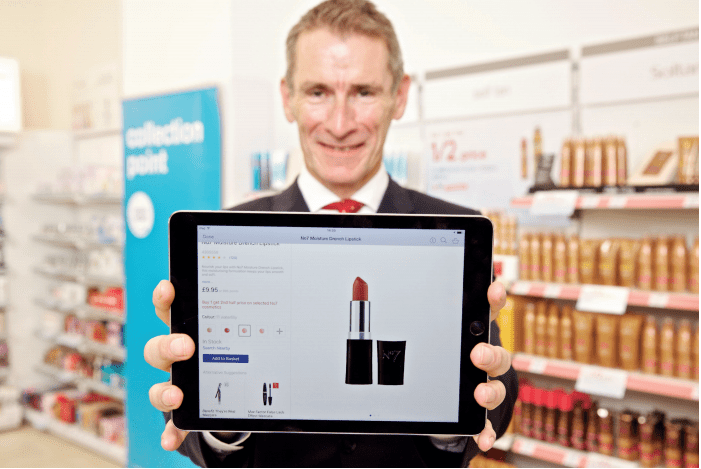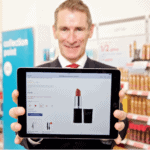Gaining a birds’ eye view of customer behaviour can help improve customer service as well as boosting the bottom line, writes Chloe Rigby
The single view of the customer has been a talking point for so long that many now assume it’s an industry norm. In reality, that’s far from the case. During a panel discussion on multichannel integration at InternetRetailing Conference (IRC) 2016, when an audience of senior retailers was asked whether they believed their businesses had fully achieved this single view of the customer, not one hand was raised.
Of course this is a highly anecdotal measure but it does aptly illustrate a retail environment in which the customer’s demands and aspirations for service still far outstrip the day-to-day reality.
Why? Because achieving that single customer view is so difficult. As panel member Neil Sansom, previously omnichannel director at formalwear business Moss Bros and now chief executive at knitwear retailer Woolovers, said: “The customer is far ahead of us and we’re struggling to meet their expectations. Omnichannel or multichannel is a serious commitment and it has to be a priority for the future.” Neither omnichannel or multichannel, he noted, were his preferred term to describe the task. Rather, “it’s all about the customer and how they experience the brand.”
It’s a phrase that sums up nicely the reasons for bringing together customer data in one place. Some data maps shoppers’ vital statistics, such as purchase history and delivery address. Other data records their interactions via the brand’s touchpoints, from website, email and telephone through to deliveries and collections and returns. Being able to see all of this data in one place enables retailers to reach out and respond to shoppers in the most relevant way possible.
Without the single view of the customer, retailers might automatically reply to a shopper who reports a problem with a message that, quite unintentionally, insults the shopper by blandly thanking them for their email. It’s far more difficult to send a, “Thank you for your enquiry, here’s a solution,” email and more difficult still to send an email that says, “Thanks for your enquiry – we’re really sorry you’ve had this problem for the second time. Here’s the solution plus a £5 voucher, because we know you are a valuable customer and we need to ensure your loyalty.”
In The Customer Performance Dimension Report, InternetRetailing researchers measure the efficiency and speed of customer service. These days, it’s clear that data is a good approach to driving that top-quality service. The importance of recognising the digital customer and responding to them with a relevant service may have begun with ecommerce but its roots go back to the local shopkeeper who knows customers by name and understands their preferences. As the ecommerce – or commerce – platform has extended to manage not only the website but also the store and call centre, the challenge has extended too. The task now is not just to understand how a customer behaves online, but also to gain a fuller understanding of that shopper by bringing together data wherever, whenever and however he or she touches the brand. Leading retailers are now doing just that, using identifiers such as loyalty cards, postcodes and email addresses to join up customers’ interactions with the brand regardless of whether they are in store or on the website.
“Unless you put the right data in, you can’t hope to personalisation. It just won’t make sense”
Robin Phillips, omnichannel and development director, Boots UK
B&Q is consolidating its multichannel customer experience from separate website, contact centre and store systems into a single website-based experience that’s fed by a single customer data and content systems. This, says Mike Durbridge, director of omnichannel at the DIY retailer, simplifies the customer experience and makes it more consistent at every touchpoint. “It’s important for us to have that consistency and connected journey when interacting with a customer or a colleague,” he said, speaking to InternetRetailing ahead of InternetRetailing Expo (IRX) 2016.
In the future, the single view of the customer will underpin cross-channel marketing and the wider use of personalisation as retailers move further towards engaging with their customers in individual and highly relevant ways, by showing them web pages that make sense to them, or sending emails and offers at opportune moments, via the devices that they are most likely to be using. Robin Phillips, omnichannel and development director at health and beauty retailer Boots UK, told IRC 2016 that retailers that are not gathering the data for the single view of the customer “can’t hope to do personalisation.” He added: “Unless you put the right data in, it won’t make sense.”
Boots itself, he said, has been developing its single view of the customer for the last three years, yet still has another two to go. The data it is bringing together in the single view includes more than 100m records from sources including the Advantage Card, Boots.com, its optician business, health records and appointment booking. Its virtual database pools existing data that is then analysed and put to use through approaches such as cross-channel campaign management and augmented customer segmentation. When Boots has got it right, says Phillips, it will have a memory view of the customer that will enable it to understand what they are trying to do next, letting them respond accordingly. This is key, he says, to its task of rewarding loyalty.
If all this sounds complicated, then spare a thought for a future when the SVC has become even more complex for retailers as new channels embodying the Internet of Things start to emerge. Already, with the arrival of Amazon’s Dash replenishment service, that retailer is enabling connected devices to not only order their own consumables but also provide customer data at the same time. And this is only the start.
In the meantime, while the single view of the customer is a project that is set to be a foundation stone in offering shoppers the service they demand, it’s one that will take time to achieve.
Don’t keep me waiting
Integral to the notion of the customer service is the notion that shoppers don’t like to wait. That’s more true online than in the store environment, where it’s unlikely that a slight delay in service will cause shoppers to move on. InternetRetailing researchers analysing the service that Top500 retailers offer their customers decided to measure the speed with which web pages loaded as they saw this as a relevant measure of the consideration that retailers extend to shoppers. And it’s certainly true that digital shoppers hate to wait, especially when shopping via mobile.
In a recent InternetRetailing webinar, NCC Group cited the DoubleClick statistic that 53% of mobile site visits are abandoned if pages take longer than 3s to load, while tiny incremental improvements that are counted in milliseconds can improve conversion, according to Mobify’s 2016 Q2 Mobile Insights Report. Andy Davies, associate director, web performance, at NCC Group explained. “Being fast is not about being fast for its own sake but about reducing friction for people visiting your site. It’s about showing them the experience more quickly and making their life easier, so they’re not sitting there looking at a blank screen. We see this through the customer’s visit to the site. One of our customers that removed two form fields from a checkout decreased the exit rate by 1.5%, making it more likely their own customers would stay and spend money.”
During that webinar, Stuart McMillan, deputy ecommerce director of Schuh , said that the speed of its responsive website had been a priority but that most retailers could improve their own site speed fairly easily. “For most sites, there are a small handful of things that [retailers] could do that would take not much time to improve. If people were committed to improving the user experience when it came to performance, I would think they could have it done between now [October 2016] and Christmas. They need to commit to understanding the importance to user experience and to the bottom line.”
Since online shoppers hate to wait, these tiny improvements in load time mean that users aren’t as impatient and are more likely to convert. Retailers that want to engage with their customers must talk to them in a timely fashion and part of that might mean being polite enough to have an optimised website that doesn’t take 5s of customers’ time to load.
That reluctance to wait was foremost in InternetRetailing researchers’ minds when they tested customer service across Top500 retailers. They measured how quickly customer service staff responded to shopper problems, as well as how long they took to resolve the issue. Their findings were that UK retailers as a group had slow average times in responding to emails, Facebook questions and telephone calls. Phone calls lasted an average of 2m 6s across the group – but 8% of all calls were unanswered. Emails were answered in an average of 27h, while multichannel retailers responded to Facebook queries in less than 9h – nearly six times quicker than the average response time for the IRUK Top500.
The retailers who lead in this Dimension were among the fastest to respond. John Lewis customer services staff answered email questions in just over 2h and on the phone delivered a service that was judged as outstanding. Staff at The Perfume Shop replied to a Facebook query
in 1h 24m and answered a phone query in less than a minute.
While overall performance is patchy, it’s clear that leading retailers are those that invest in responding to customers across all channels.
“Since online shoppers hate to wait, tiny improvements in load times mean that users aren’t as impatient and are more likely to convert.”
Getting it right
Improving customer service surely starts with the customer. That’s another way that the single view of the customer, touched on earlier, comes into play. Retailers can ask customers what they think of their service through research but thanks to their improved view, and understanding, of customer data, they might also analyse their behaviour both online and across channels, using the data that single view brings together. By improving the customer’s experience across those channels and focusing on the ‘pain points’ that emerge from its analysis, retailers can potentially take a few simple steps that should have a lasting effect on the bottom line. These steps might be as straightforward as focusing customer service resources across channels, or ensuring that the phone gets answered quickly by people who are empowered to resolve any issues.
Ultimately, it’s at the bottom line that most business improvements are truly measured. Our research supports the idea that even the simplest changes that benefit the customer are likely to have a far-reaching effect here.






